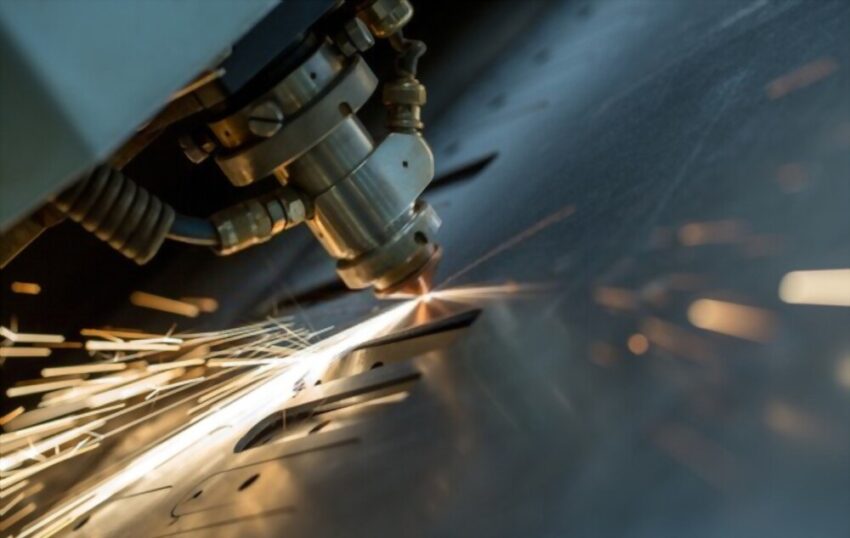The sheet metal fabrication industry is constantly evolving. Keeping up with the latest trends is important for fabricators to stay competitive and serve their customers well. Contract manufacturers that seek backward vertical integration gain better efficiencies, productivity and lower costs. Cost reduction comes directly from lowering supplier margins and indirectly by cutting out excessive supply chain costs.
Technological Advancements
Metal fabrication requires a high level of skill and expertise. But the industry must also keep up with technological advancements and automation tools. These technologies improve customer service and help metal fabricators stay ahead of competitors in their respective markets. Machine learning, for example, allows metal fabricating companies to create a more personalized experience for customers and anticipate their needs. This technology also makes it easier to communicate prices, timelines, and quality assurance.
Other technological advances include 3D printing, which enables sheet metal manufacturer fabricators to customize products and cut costs. Fiber lasers are another innovative technology that increase sheet metal manufacturer fabrication capabilities. They’re especially useful for cutting materials that are sensitive to heat changes. These machines deliver greater accuracy, speed and performance than traditional CO2 lasers. They can also be used for prototyping, which helps manufacturers save time and money. Additionally these tools can help reduce energy consumption in manufacturing facilities.
Quality Control
Sheet metal fabrication processes can be optimized for cost savings, time reductions and improved productivity. This can be done by implementing the right emerging technologies, such as tube laser cutting, robotic welding and 3-D printing. These techniques can significantly shorten production cycles and reduce costs, making it easier to stay competitive in the electronics industry. Manufacturers should also consider manufacturability when designing components, focusing on building effective and streamlined designs that can be easily fabricated.
Vertically integrated sheet metal manufacturers have a deeper understanding of what drives costs and lead times in various manufacturing processes, such as laser cutting, CNC bending and welding. As a result they can offer customers definite lead times without having to factor in a margin for potential delivery delays caused by events or supplier issues beyond their control. Additionally, these companies often have streamlined procurement and production systems as well as sophisticated quality performance tracking capabilities.
Sustainability Initiatives
Sheet metal manufacturers fabrication requires a variety of materials and tools. Choosing the right material is essential to reduce waste and improve efficiency. Selecting components that are affordable, accessible, and durable can help lower costs and reduce production time. Additionally, using lean manufacturing principles can reduce wasted steps and streamline the fabrication process. Manufacturers can also reduce their environmental footprint by implementing sustainable initiatives.
This includes reducing waste from processes such as rework scrap and cutting. They can do this by incorporating technologies like automation, CNC machining, and laser cutting into their workflows. These technologies can improve productivity, reduce labor costs, and increase accuracy. Moreover, they can recycle byproducts such as steel dust and low-iron sludge into other uses. This helps reduce the impact on the environment and saves on cost by avoiding the need to purchase new raw materials.
Talent Development
A company-wide approach to talent development is essential for any manufacturer looking to stay ahead. The best talent development programs empower employees to grow in their roles, through targeted L&D curriculums and experiential learning opportunities like mentorships. Developing talent helps to eliminate skill gaps and improve employee retention. In fact, improving employee retention was one of the top concerns in a recent NAM Outlook Survey, as companies struggle to find and retain high-quality workers.
A successful talent development program will also help to identify the next generation of leaders within an organization. By identifying growth opportunities, talent development professionals can pinpoint high-potential employees and provide them with the training and resources necessary to advance into leadership roles. Ultimately, the right talent development strategy can produce significant business benefits for manufacturers and ensure that they continue to deliver the highest quality work possible.
Market Research and Analysis
Sheet metal fabrication companies can stay ahead of the competition by investing in research and development. This can help them develop innovative products that will drive future growth. Additionally, they can use market research and analysis to identify opportunities that will benefit them in the long term. For example, the growing demand for electric vehicles will create new opportunities for manufacturers. This will require lightweight materials for the production of car chassis and bodywork.
Additionally, governments are implementing stricter emission standards. This will increase the demand for aluminum, which is a highly recyclable material that can reduce carbon emissions. Lastly, the growing population in the Asia Pacific region will create demand for more industrial equipment. This will increase the need for warehousing and logistics solutions, which can boost industry revenue. This trend also increases the need for automation tools that can improve efficiency and productivity.
Supply Chain Optimization
Sheet metal fabrication contract manufacturers that invest in backward vertical integration can take advantage of greater cost controls, improved supply chain continuity and shorter lead times for their customers. This approach is gaining in popularity in the U.S. A number of companies have started to bring work that was previously outsourced back in-house as raw material prices have surged and transportation costs have skyrocketed during the COVID-19 recession.
To ensure the highest profitability, sheet metal fabricators must focus on optimizing their inventory and production processes. This involves minimizing waste, using 3D design automation to generate accurate quotes, and creating effective designs that are easy to fabricate. Another key factor is maximizing the use of raw materials.


